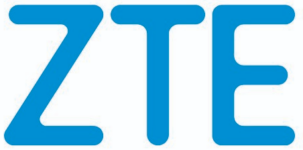Sponsored by:

The basic mission of transport networks in the 5G era stays the same – providing plentiful capacity for all telecoms services’ needs. However, to successfully support evolving services and user landscape, the transport networks need to significantly enhance their capabilities across the board.
- Mature 5G deployments and fixed-mobile convergence are driving operators to deploy cloud capacities across their infrastructure. Transport networks need to serve these fluid multi-cloud environments efficiently and allow operators to realize operational efficiencies and keep costs down.
- Additionally, transport networks need to be able to serve not only the needs of operators’ internal functions, but also an expanding portfolio of services targeted at small, medium, and large organizations across verticals, with differentiated capacity, QoS and service parameters. These requirements set stage for transport network technology developments in the future.
In the past, telecommunication transport networks primarily represented a collection of static network links, often deployed with significant over-provisioning of capacity, and rarely changed or reconfigured. This corresponded well with the static nature of other telco domains and services, which were also static and required little change over time.
However, the network virtualization, and especially accelerating deployments of software-based, cloudified 5G networks create a new set of demands that transport networks need to satisfy.
- Diverse multi-cloud environments: 5G networks represent the pinnacle of the network virtualization trend started in early 2010’s with the onset of NFV. Mature 5G network, supporting multiple vertical use cases, requires deployment of compute capabilities across the network – from the near edge all the way to central data centers. Moreover, these multi-cloud environments will be fluid, with workloads being instantiated dynamically.
- New quality requirements: Most services attached to advanced 5G use cases will, in one way or the other, require qualitatively different type of connectivity – be it low-latency connections for time-sensitive use cases, or high-quality deterministic connectivity for industrial automation and robotics.
- Expanding set of services and clients: 5G comes amid a wider trend of digitalization of practically all industry vertical telcos serve nowadays. This trend increases reliance of vertical organizations on digital services and applications, opening way for operators to monetize their transport networks in a new way, offering a range of new connectivity services aimed at different sized vertical organizations, and varied use cases. This new set of requirements includes the need for operators to offer smaller granularity services on their transport networks, either for use cases requiring lower capacity connections, or for supporting users migrating away from legacy networks.
5G and associated network cloudification thus drive a set of new requirements and technology changes operators need to undertake in their transport networks. Anticipating these challenges, network equipment vendors have implemented the following solutions increasing network agility and quality, expanding services portfolios, and reducing operational complexity:
- Network Agility: Although transport network elements largely cannot be virtualized, their capabilities in serving multi-cloud environments can be greatly expanded. The prime example are technologies enabling network slicing in the transport. Segment routing (SR-MPLS, SRv6), FlexE and FlexO, in conjunction with SDN control and orchestration mechanisms allow operators to deploy capacity dynamically, considering specific application requirements or traffic types carried, in support of 5G use cases and other services.
- Expanding Services Portfolios: Today’s transport networks have evolved past the single service/single use networks into dynamic multi-service environments, serving diverse traffic types, with a full gamut of client link capacities, and QoS mechanisms allowing precise control of latency and other connection parameters. Operators also should explore technologies and mechanisms allowing them to extend their transport services portfolio into lower capacity links, to be able to optimize their offering and cover a wide gamut of legacy and new use cases. In conjunction with this trend, service orchestration mechanisms allow service lifecycle management automation, which is necessary due to the increased number of internal and external clients these transport networks are serving.
- Reduced Operational Complexity: Increased number of service types, clients, and the need for dynamic provisioning make the legacy way of operating the networks untenable – manual provisioning, operations, administration, and maintenance not only incur high cost, but cannot scale the number of operations required fast enough to satisfy the needs of a multi-cloud, multi-service transport network environment. Operators therefore need to consider SDN, network and service orchestration, and automation solutions as an integral part of their transport network deployments in support of 5G networks.
The technologies and architectural changes described above are often discussed in operator organizations, and their elements are deployed in many network environments. The requirements of mature 5G networks and advanced use cases it is supposed to support will favor efficiencies that can only be realized in interworking of technologies increasing network agility, expanding service portfolios, and reducing operational complexity.


